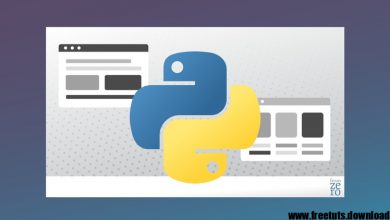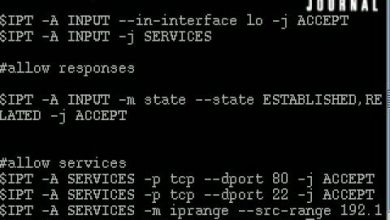Multi threading in Python

Multi threading in Python Free Tutorial Download
What you’ll learn
-
you will be able to write Multithread programs using the multithreading APIS in python
Requirements
-
Basics of Python
Description
Welcome to the Course “MultiThreading In Python”:Python Multithreaded Programming
This course is from a software engineer who has managed to crack interviews in around 16 software companies.
Sometimes, life gives us no time to prepare, There are emergency times where in we have to buck up our guts and start bringing the situations under our control rather then being in the control of the situation. At the end of the day, All leave this earth empty handed. But given a situation, we should live up or fight up in such a way that the whole action sequence should make us proud and be giving us goosebumps when we think about it right after 10 years.
Some feel threads are too hard and painful for programmers to use. It can be difficult to get a good education in how to program with threads. Most of the times, concurrent programming remains somewhat esoteric.
If you’re a programmer and you’re not already writing concurrent software, you should start. 100+ cores could be common ten years from now (or possibly even sooner).
As the typical number of CPUs increases, concurrency is changing from a beneficial option to a necessity. That will increase demand for understanding of concurrent programming, and every programmer needs the knowledge of concurrent programming.
This course contains A simplistic programming approach which helps you to learn the concepts and usage of different multi threading apis in the Multi Threading module of Python.
The following programming questions are dealt in this course:
1. Write a pgm to create a thread which will print ‘hello world’ on the screen
2. Write a pgm to create 5 threads which in turn each will print ‘hello world’ on the screen
3. Write a pgm to create a thread which adds 2 numbers and prints the result
4. Write a pgm to create 5 threads which executed in parallel, each will add 2 numbers and print the result
5. Write a pgm to print the default thread name while the thread is under execution
6. Write a pgm which creates a thread, officially names it and tries to print the official name of the thread
7. Write a pgm where in we use the logging function to print the thread name, the debug level while the thread is executing
8. Write a pgm to create a thread which is not dependent on the main thread (create a daemon thread)
9. Write a pgm to do the following:
– Create a daemon thread
– From the main thread function, wait indefinitely for the daemon thread to complete execution
10. Write a pgm to do the following:
– Create a daemon thread
– From the main thread function, wait for a stipulated period to the daemon thread to complete execution
11. Write a pgm to check if the thread is still active and is the thread a daemon
12. Write a pgm to create a daemon thread, and using the enumerate and join function, wait for the daemon thread to complete execution
13. Write a pgm to create 3 daemon threads, and using the enumerate and join function, wait for the deamon threads to complete execution
14. Write a pgm to override the run() function of thread
15. Write a pgm to override the constructor and run() functions of thread
16. Write a pgm where in a thread waits for a particular event indefinitely. once the event is set by the main thread, the thread stops waiting and resumes execution
17. Write a pgm where in a thread waits for a particular event for a particular period of time. once the event is set by the main thread, the thread stops waiting and resumes execution
18. Write a pgm which creates 2 threads which does the following with out conflict:
Acquire the lock, increment the counter value and release the lock.
19. Write a pgm where in the main thread tries to acquire the lock twice in a sequential fashion
20. What is the advantage of using a with statement to acquire a lock in a thread.
21. Write a pgm where two consumer threads wait on the producer thread to notify them about the availability of the resource
22. Explain the usage of semaphores in threads
23. Explain the usage of threading. local()
24. What are the different lock types a Condition object can be associated with?
25. What is the method that wakes up all threads which are waiting for the condition to set
26. Which method is used to identify a particular thread?
27. What is the method used to retrieve the list of all active threads?
28. Which kind of lock supports the following statement:
– If a thread already owns the lock, acquire() will increment the recursion level by one, and return immediately.
29. The following states/features supported by the ____________ object
Locked
Unlocked
30. The following states/features supported by the _______________ object
Locked
Unlocked
Owning thread
Recursion level
31. Which thread method is used to wait until it terminates?
32. How to detect the status of a python thread?
33. How to check if a particular thread is a Daemon or a normal thread ?
34. Which one is reentrant lock type?
35. How to terminate a blocking thread?
36. How is the run() method invoked?
37. _____________ synchronization method is used to secure the resources with limited capacity
Who this course is for:
- Python Automation Engineers
- Python Developers
- Students, Fresh Graduates
- Anybody who is interested to learn the MultiThreading concepts in Python
Download Multi threading in Python Free
https://bayfiles.com/Vek2X2m1p9
https://drive.google.com/file/d/1n75alb_yYPr996A3dx3RgsxZ3vZwBg5W/view?usp=sharing
https://uptobox.com/5mjgcs6jmrno




